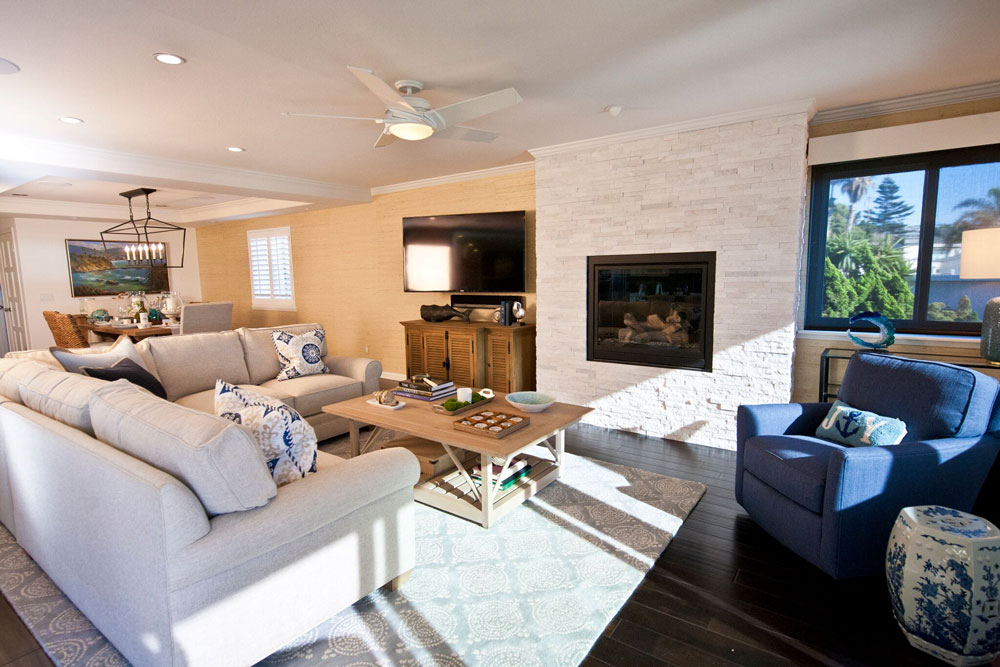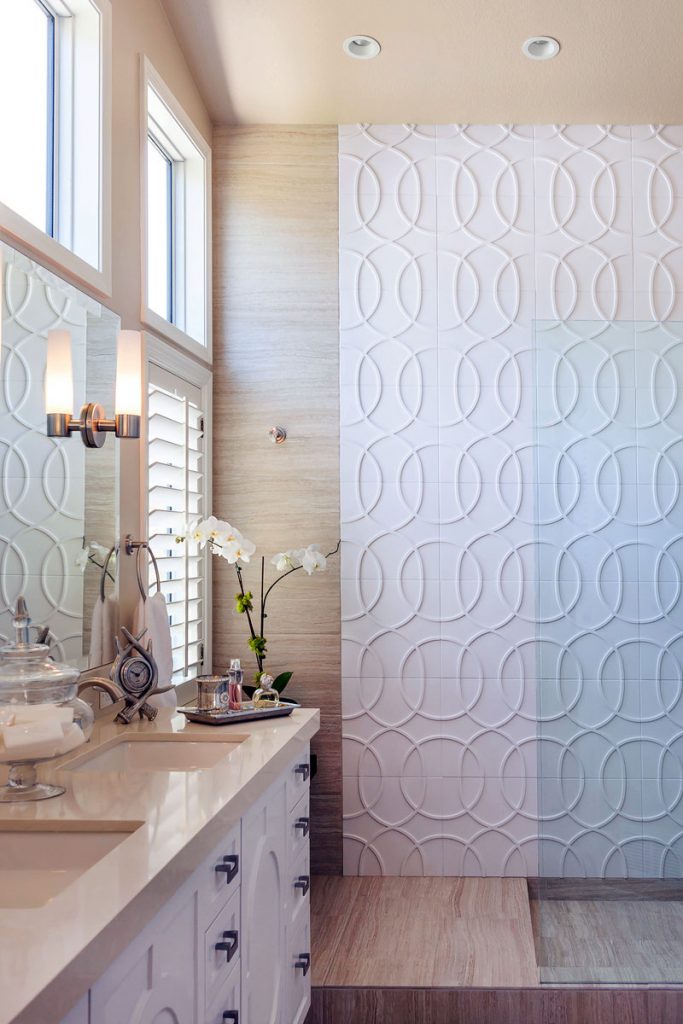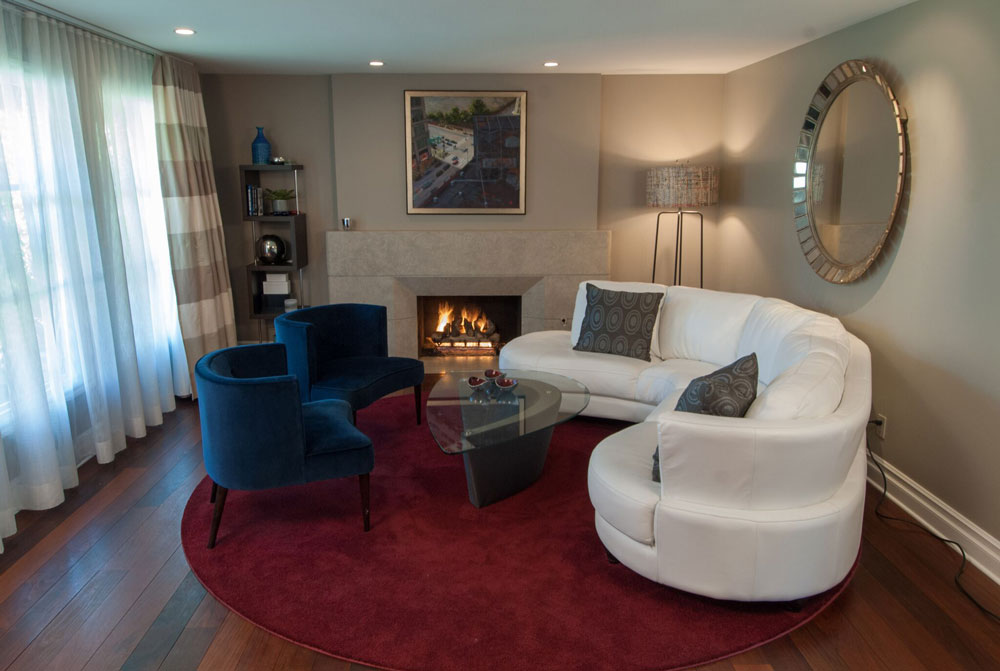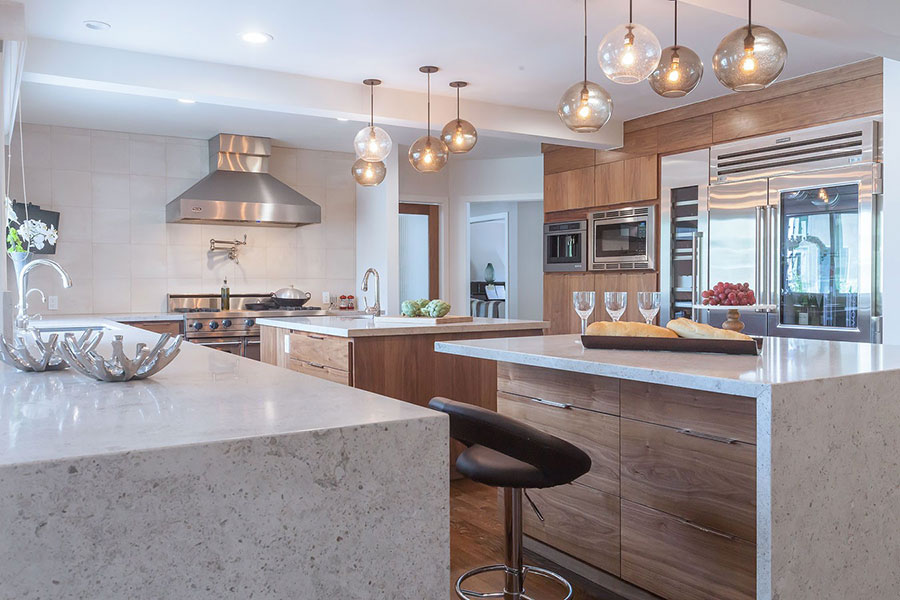What’s contemporary style? Simply put, contemporary at its core refers to things “of the moment.” Five or ten years from now, contemporary design will likely have a different look and feel than it does today. This is where “modern” and “contemporary” go their separate ways. Modern design has a specific look and feel, developed during a specific design movement in the early 20th century, but contemporary design is always changing and will embrace new materials and pieces, as they are available.
Strong lines, smooth forms, and minimal accessories characterize contemporary design.

Does a sharp, clean and uncluttered space sound like heaven to you? Then contemporary style might be right up your alley.
Strong Lines

Contemporary design is oriented along a strong horizontal and vertical lines and planes, both in architecture and furnishings. But that doesn’t mean that everything in your home must have square corners. A few important curves create balance; the key is to stay true to simple geometric forms: circles, cylinders, waves. Leave the scallops and curlicues to your more traditional friends.
Unbroken horizontal lines feature prominently in contemporary spaces; edges are sharp and clean rather than distressed or beveled.
Neutral Palettes

Elizabeth Ribons (Environments Design Group)
Cream, white, tan, beige, black — these are the foundation upon which contemporary design is built. Monochromatic and tone-on-tone schemes bring focus to the lines and shapes within a room.
But also remember that neutral can be a broad term. Choose a shade with undertones that add interest like a gray-blue or a cream with a hint of green. Shots of color are judiciously focused: an accent wall, some bright pillows or a bold piece of furniture.
Authentic Materials

Use a variety of materials including metal, stone, and glass. The simple lines will bring out the inherent beauty of each material. To soften and warm up the space, add textured fabrics in plain colors for window treatments, pillows, or rugs.
Natural textiles such as silk, wool, linen and cotton are used for their textural qualities and naturally neutral hues. However, bold color or geometric pattern may be brought into the design with pillows, a rug or a throw.
Open Space
Having open space in your room is one of the most important – yet often most difficult to manage elements. Even if it’s just the illusion of open space, this key element brings the serenity of this design style. Floating vanities, expansive floors and an overall feeling of lightness and airiness are hallmarks of the style. While contemporary isn’t necessarily minimal, it means editing back the amount of furnishings and accessories in your space.
High Impact Furniture

Because of the careful editing involved in a contemporary room, every piece becomes incredibly important. One of the characteristics of contemporary design is creating a single strong focal point. This could be a large piece of furniture, a bold geometric rug, or an oversized piece of art.
Furniture pieces feature clean lines and smooth surfaces without any carving or adornment. Silhouettes are slim, but not dainty. Sofas, chairs, and ottomans have exposed legs. Beds and chairs usually have no skirt, trim, fringe, or tassels.
Minimal Accessories

Edit out “cute” and “small.” Go basic, bare, bold, and structural. Large-scale art is right at home in a contemporary home. Frames in high-gloss or matte black, natural wood, or metal finishes will be the right fit for these spaces. If you want to hang several pieces together, hang them close so they give the feeling of one large piece instead of many small pieces.
In bathrooms and kitchens, choose chrome or nickel finishes, glass and mirrors, ebony wood and other materials; these accents will feel right at home in contemporary design.
If contemporary style appeals to you, remember that less is more: smooth profiles instead of ornamentation, fabrics in solid colors or subtle patterns instead of colorful prints, edited accessories rather than displays of collectables. You might find the serene simplicity of contemporary style is exactly what you have been longing for.

